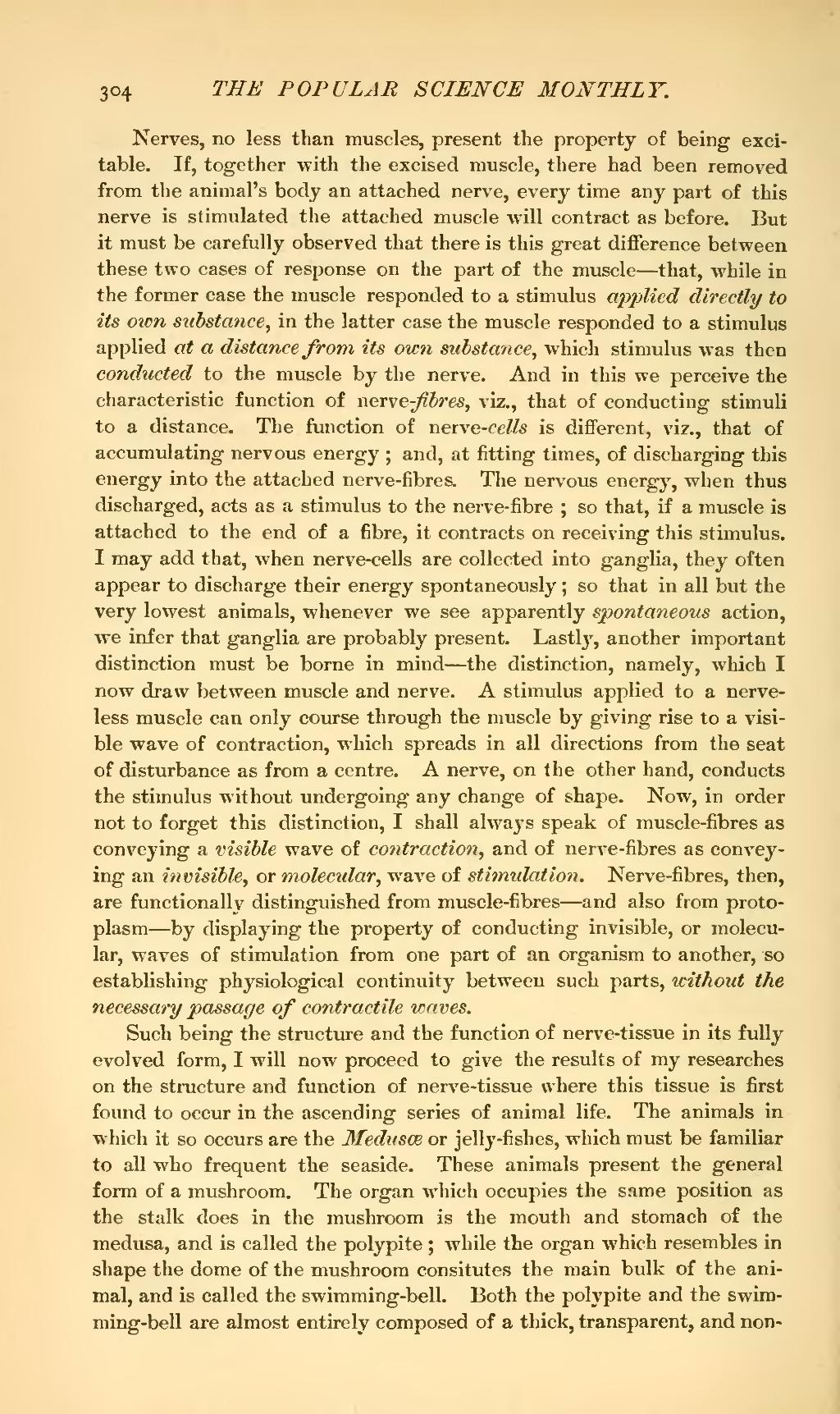Nerves, no less than muscles, present the property of being excitable. If, together with the excised muscle, there had been removed from the animal's body an attached nerve, every time any part of this nerve is stimulated the attached muscle will contract as before. But it must be carefully observed that there is this great difference between these two cases of response on the part of the muscle—that, while in the former case the muscle responded to a stimulus applied directly to its own substance, in the latter case the muscle responded to a stimulus applied at a distance from its own substance, which stimulus was then conducted to the muscle by the nerve. And in this we perceive the characteristic function of nerve-fibres, viz., that of conducting stimuli to a distance. The function of nerve-cells is different, viz., that of accumulating nervous energy; and, at fitting times, of discharging this energy into the attached nerve-fibres. The nervous energy, when thus discharged, acts as a stimulus to the nerve-fibre; so that, if a muscle is attached to the end of a fibre, it contracts on receiving this stimulus. I may add that, when nerve-cells are collected into ganglia, they often appear to discharge their energy spontaneously; so that in all but the very lowest animals, whenever we see apparently spontaneous action, we infer that ganglia are probably present. Lastly, another important distinction must be borne in mind—the distinction, namely, which I now draw between muscle and nerve. A stimulus applied to a nerveless muscle can only course through the muscle by giving rise to a visible wave of contraction, which spreads in all directions from the seat of disturbance as from a centre. A nerve, on the other hand, conducts the stimulus without undergoing any change of shape. Now, in order not to forget this distinction, I shall always speak of muscle-fibres as conveying a visible wave of contraction, and of nerve-fibres as conveying an invisible, or molecular, wave of stimulation. Nerve-fibres, then, are functionally distinguished from muscle-fibres—and also from protoplasm—by displaying the property of conducting invisible, or molecular, waves of stimulation from one part of an organism to another, so establishing physiological continuity between such parts, without the necessary passage of contractile waves.
Such being the structure and the function of nerve-tissue in its fully evolved form, I will now proceed to give the results of my researches on the structure and function of nerve-tissue where this tissue is first found to occur in the ascending series of animal life. The animals in which it so occurs are the Medusæ or jelly-fishes, which must be familiar to all who frequent the seaside. These animals present the general form of a mushroom. The organ which occupies the same position as the stalk does in the mushroom is the mouth and stomach of the medusa, and is called the polypite; while the organ which resembles in shape the dome of the mushroom consitutes the main bulk of the animal, and is called the swimming-bell. Both the polypite and the swimming-bell are almost entirely composed of a thick, transparent, and non-
